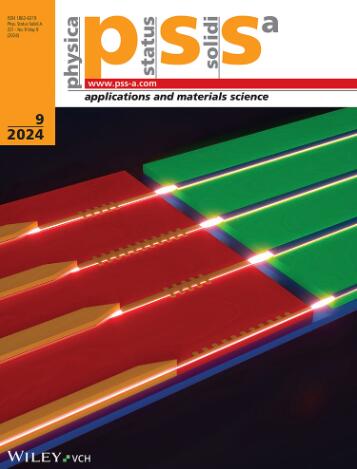Temperature‐Induced Transformation of the Atomic Configuration of the BO2* Defect in Boron‐Doped Czochralski Si
IF 1.9
4区 材料科学
Q3 MATERIALS SCIENCE, MULTIDISCIPLINARY
Physica Status Solidi A-applications and Materials Science
Pub Date : 2024-08-13
DOI:10.1002/pssa.202400484
引用次数: 0
Abstract
In this study, the new data concerning the electronic and vibrational properties of the B掺硼的佐赫拉尔斯基硅片中 BO2* 缺陷原子构型的温度诱导转变
在这项研究中,我们报告了有关 Czochralski 生长的掺硼硅中 BsO2i* 缺陷的电子和振动特性的新数据。在经过高温处理的硅中,发现了一种新的与硼有关的缺陷。观察到与所揭示缺陷相关的硼的额外中心内电子转变。由于该缺陷的形成效率与硼含量呈线性关系,而与氧浓度呈二次关系,因此被确定为 BsO2i。所揭示的复合物是与先前确定的 BsO2i* 缺陷的退火同步形成的。检测到的复合物是由于 BsO2i* 缺陷的原子构型发生温度转变而形成的。这种转变的活化能为 2.59 eV。与 BsO2i* 复合物两种构型相关的局部振动模式均已确定。研究结果表明,两种构型的 BsO2i* 缺陷都存在于很宽的温度区间,会影响材料的光学和电子特性,因此在开发硅:B 基器件时必须加以考虑。
本文章由计算机程序翻译,如有差异,请以英文原文为准。
求助全文
约1分钟内获得全文
求助全文
来源期刊
CiteScore
3.70
自引率
5.00%
发文量
393
审稿时长
2 months
期刊介绍:
The physica status solidi (pss) journal group is devoted to the thorough peer review and the rapid publication of new and important results in all fields of solid state and materials physics, from basic science to applications and devices. Among the largest and most established international publications, the pss journals publish reviews, letters and original articles, as regular content as well as in special issues and topical sections.

 求助内容:
求助内容: 应助结果提醒方式:
应助结果提醒方式:


